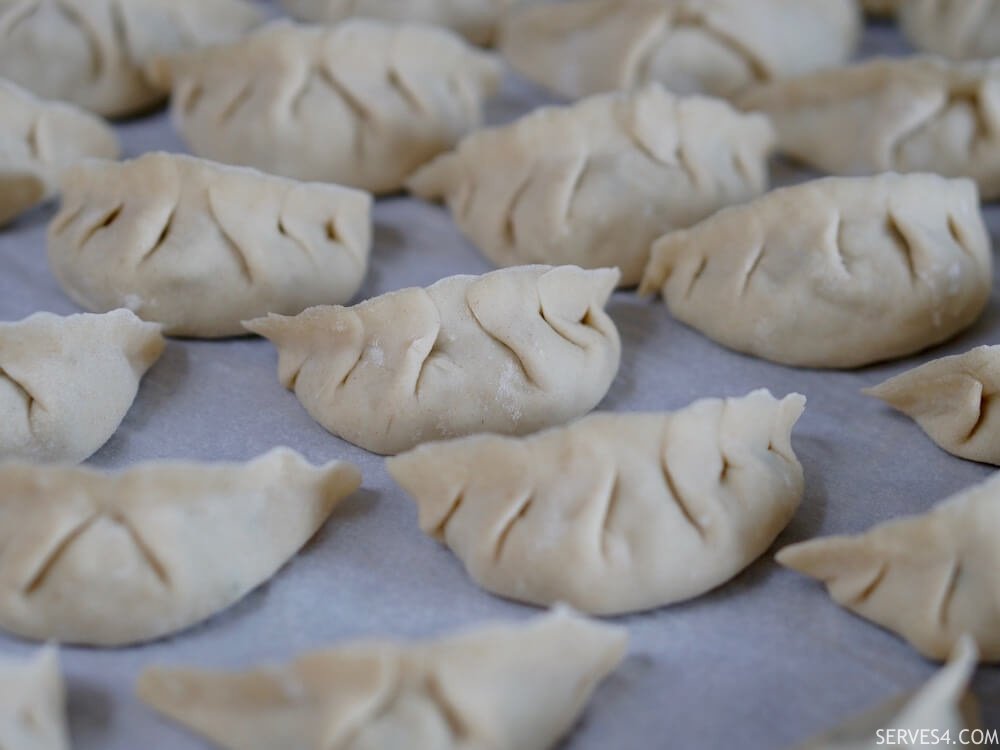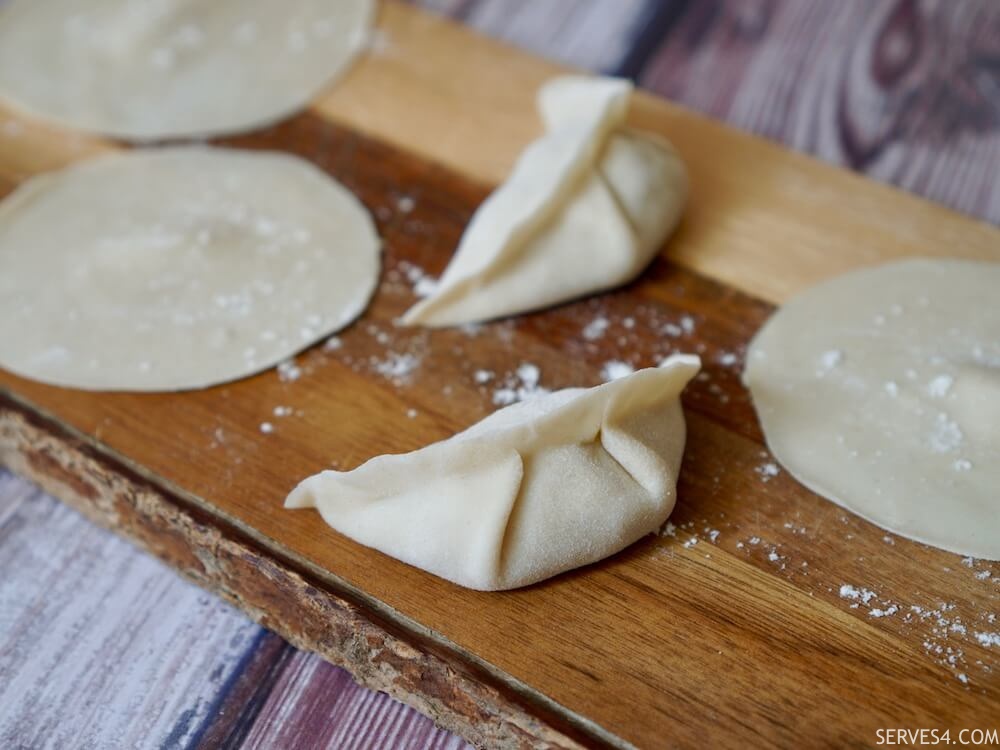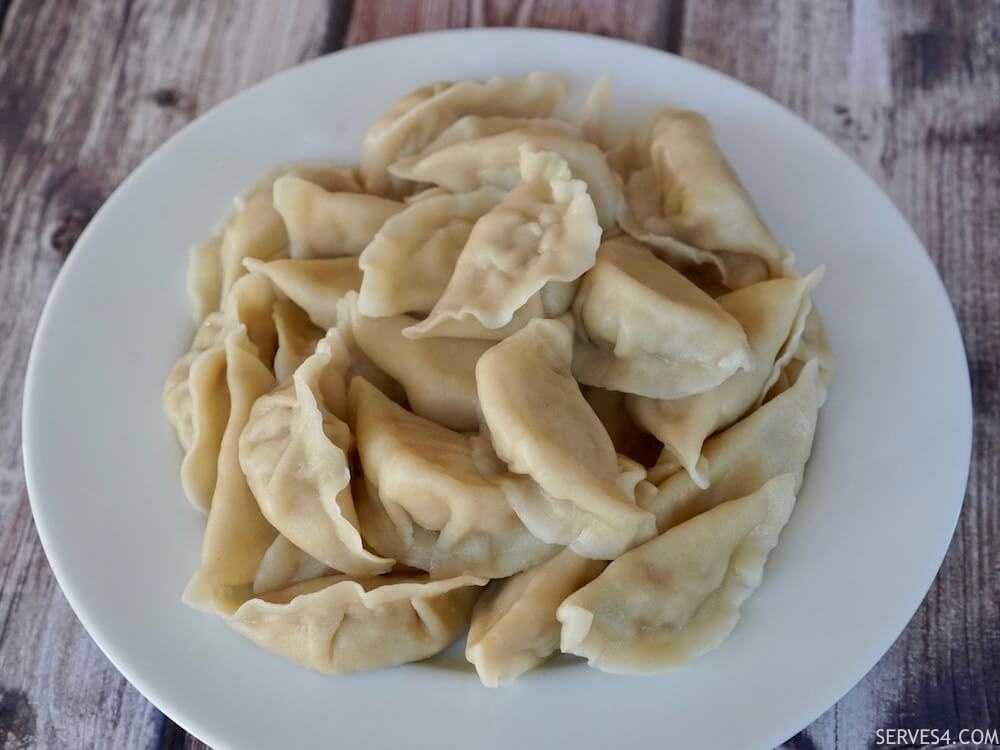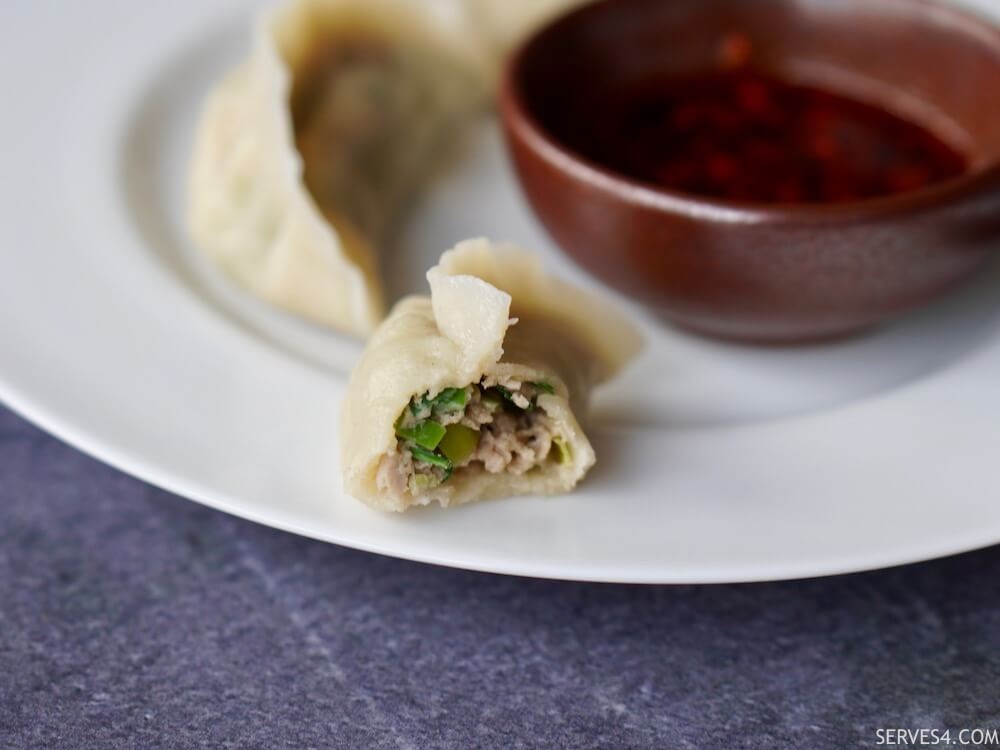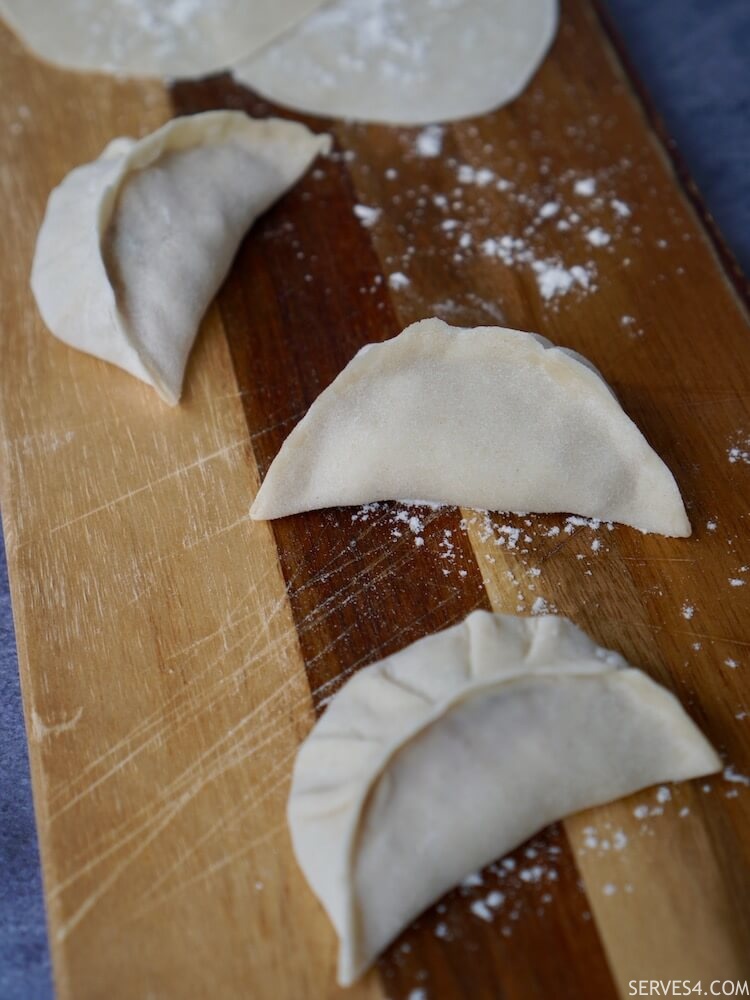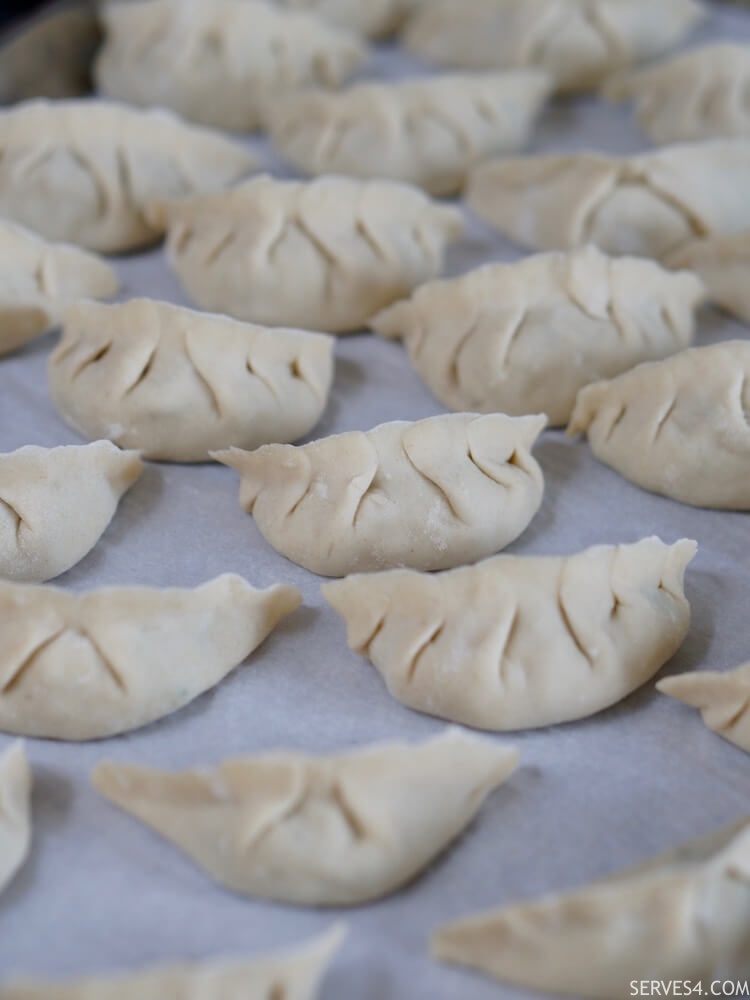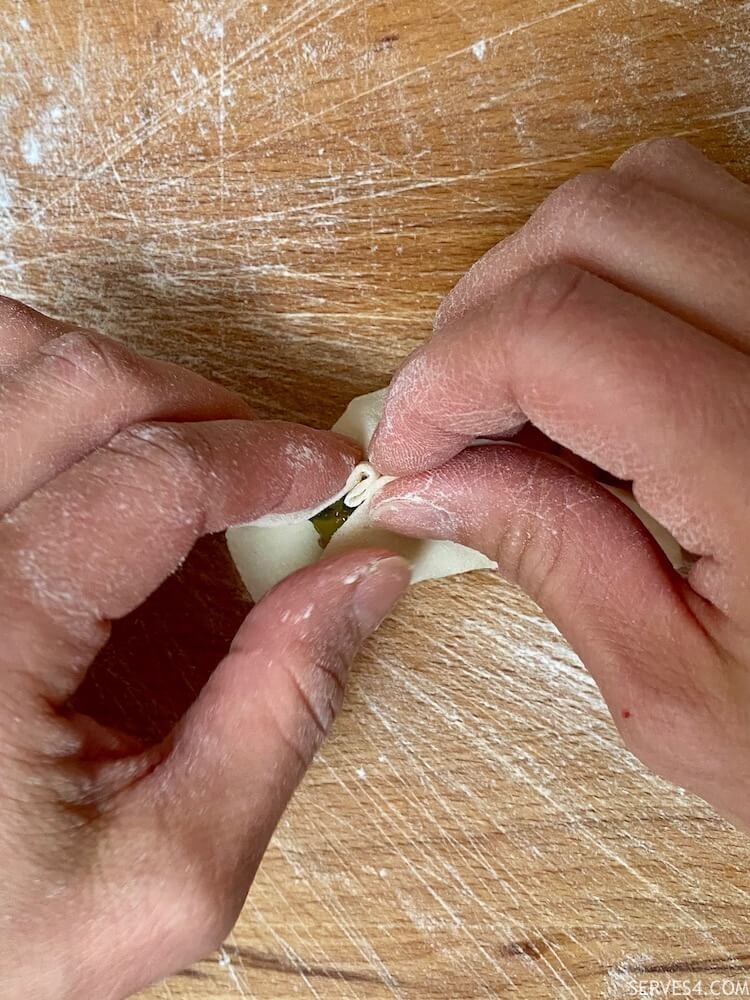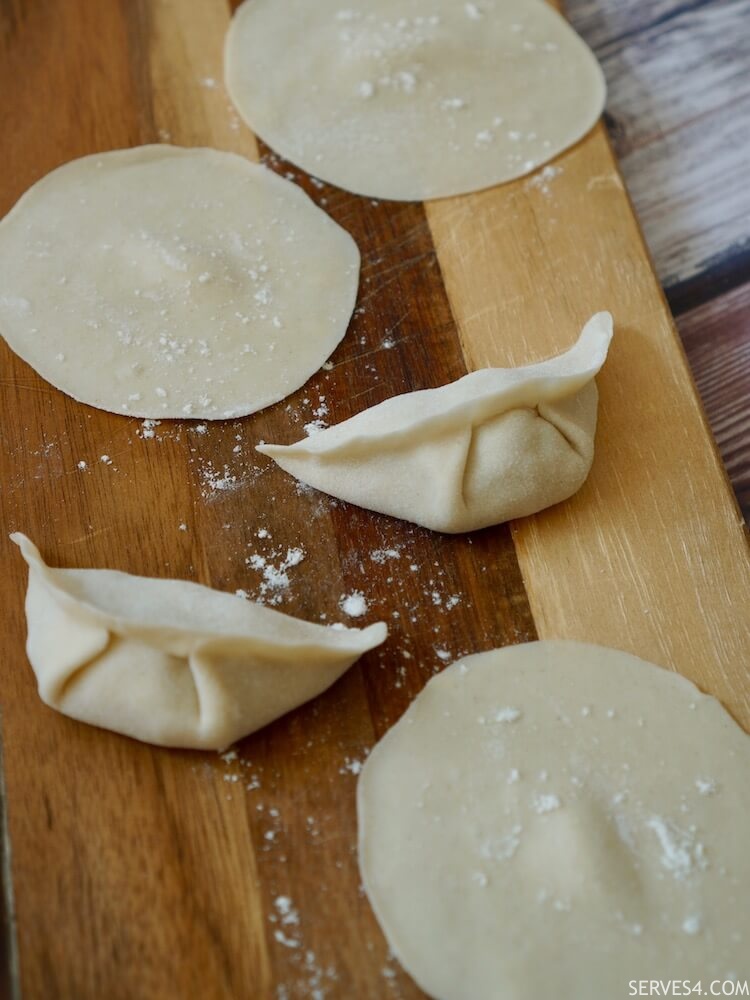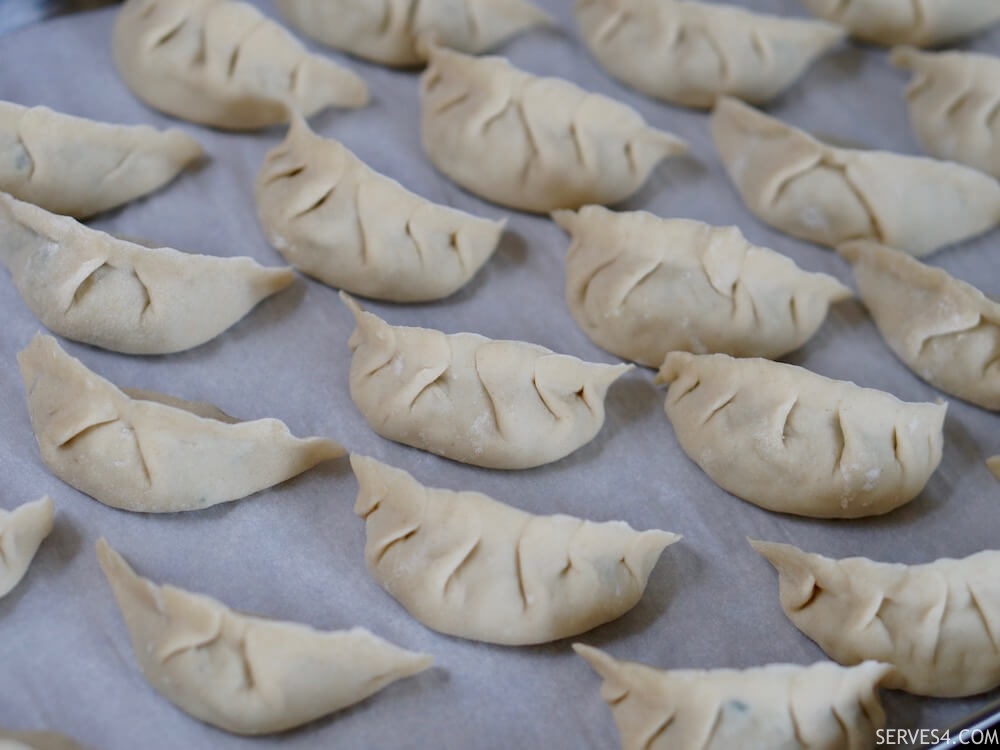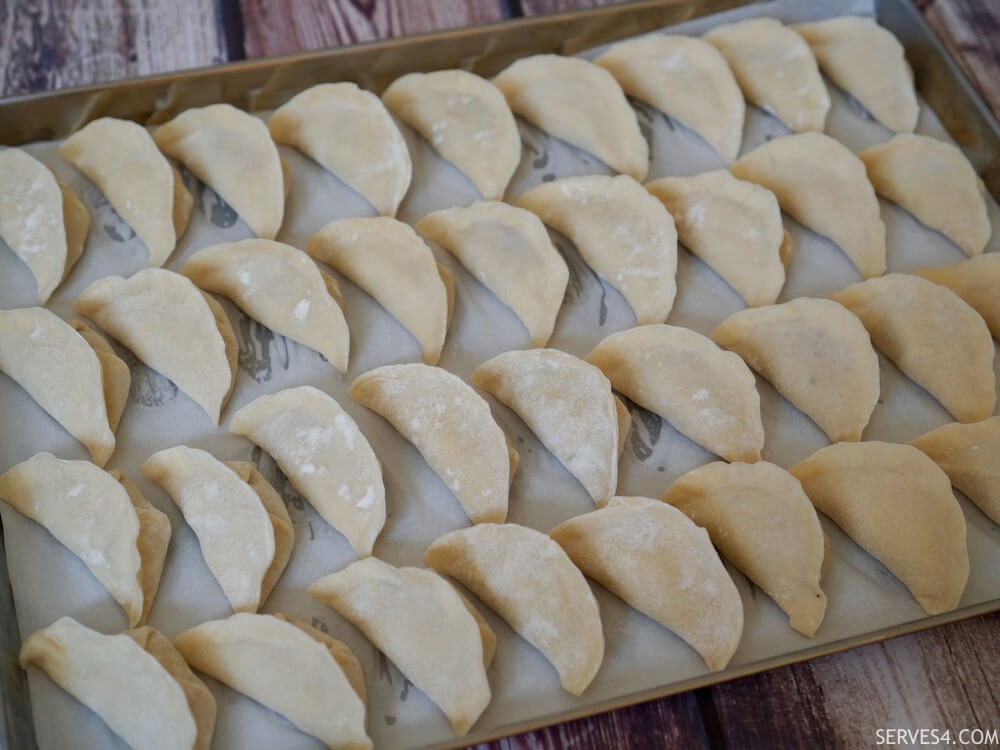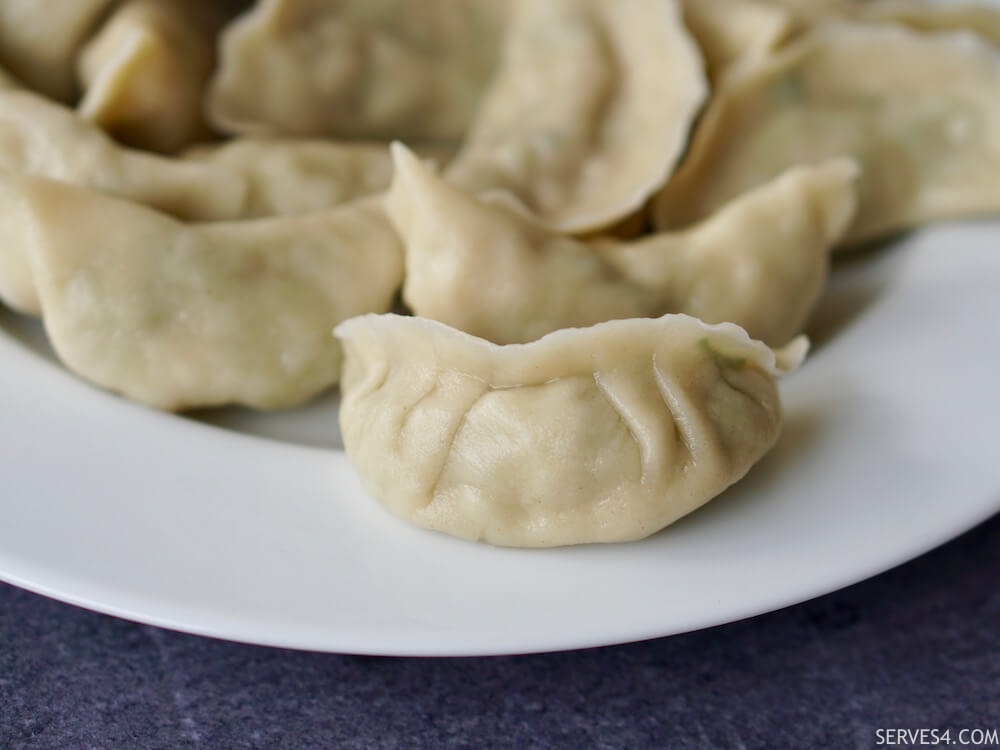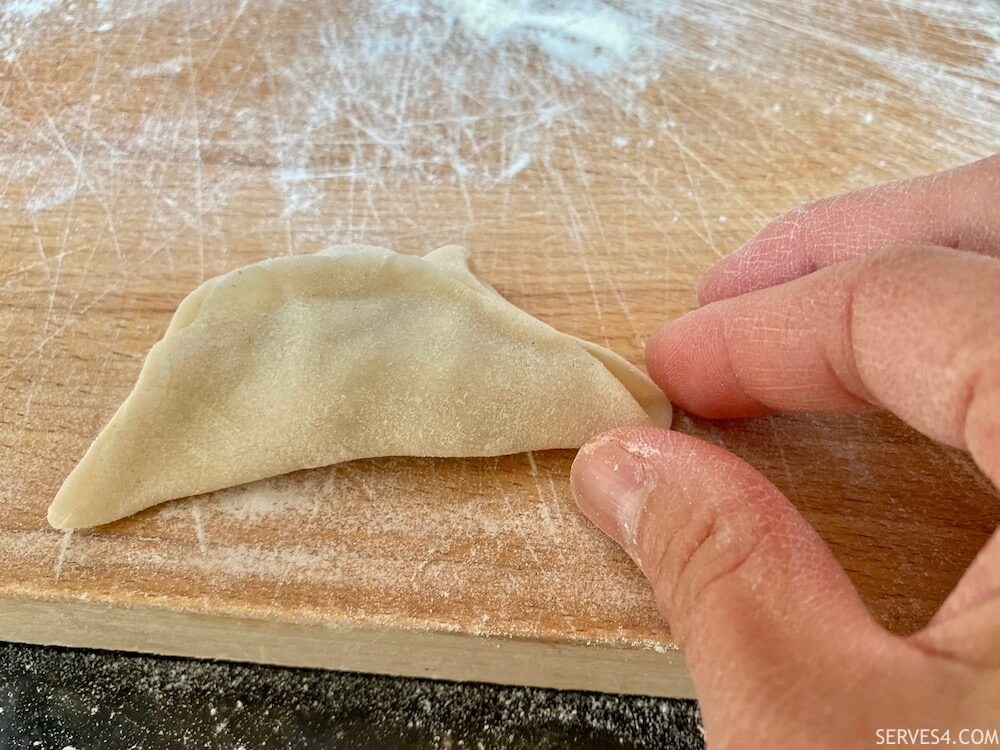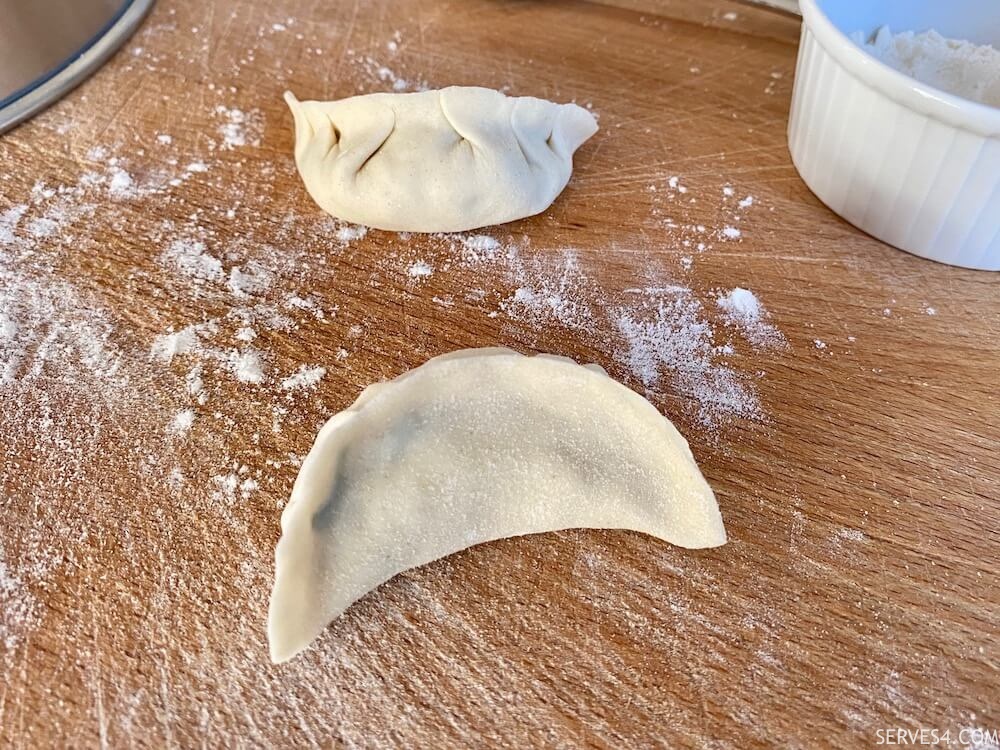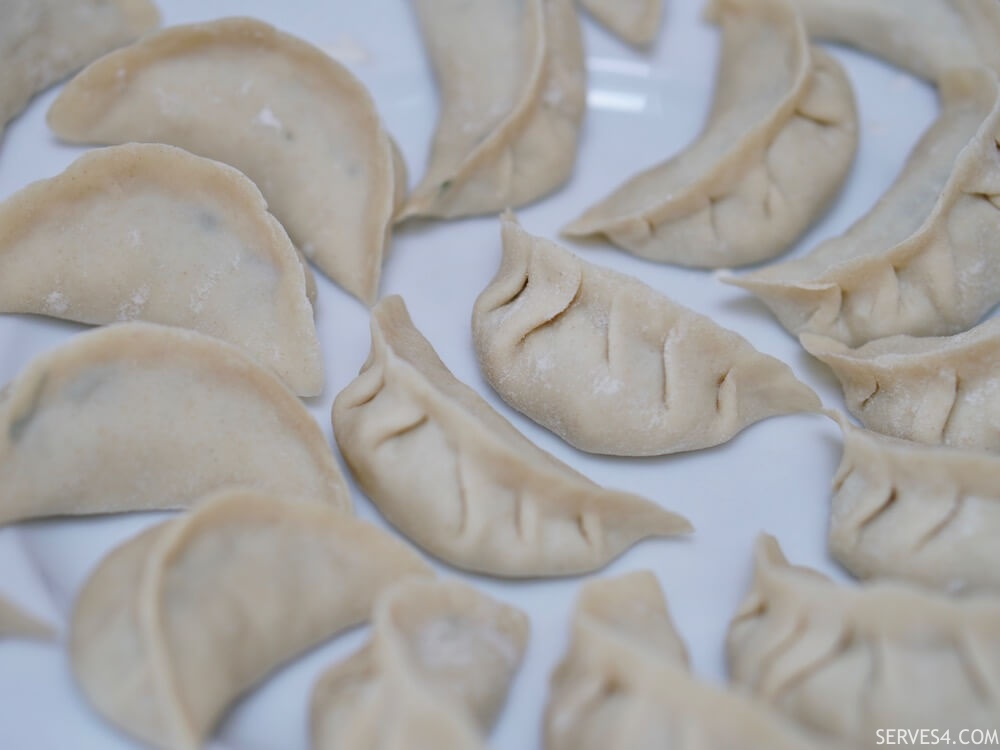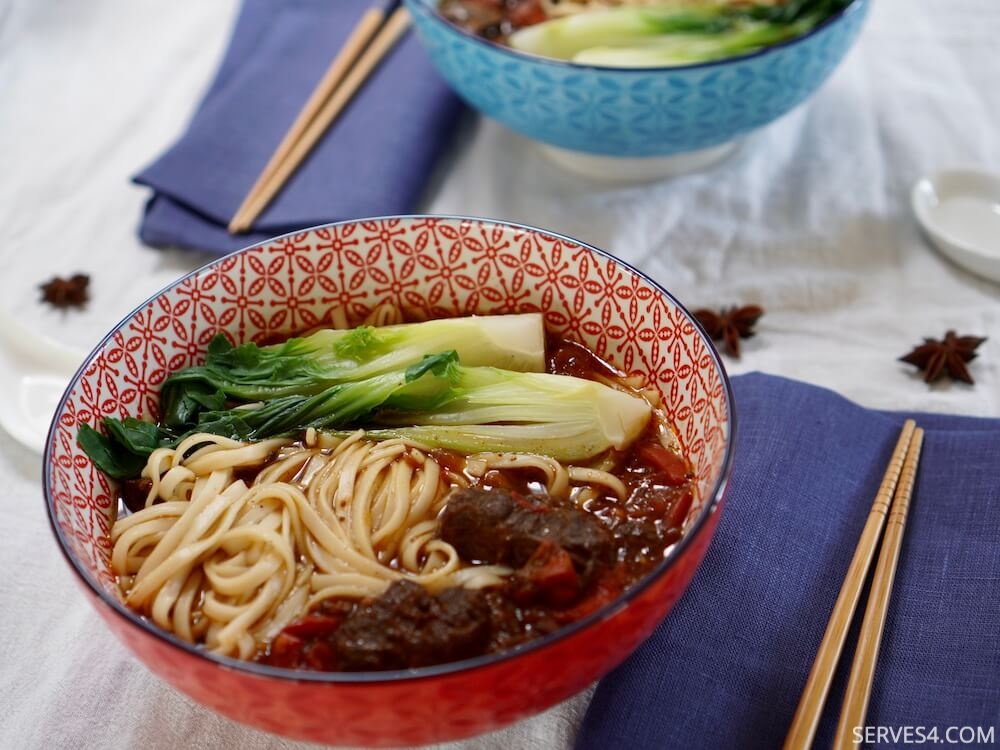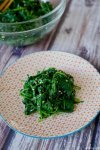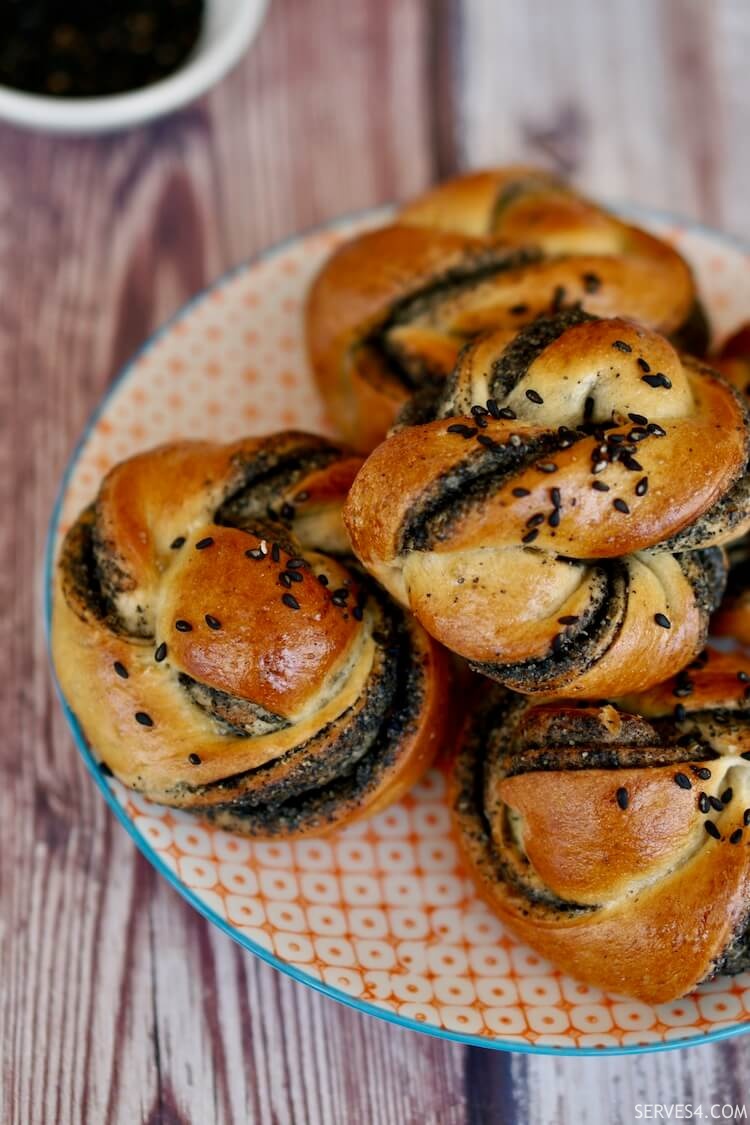- Serves 4
- Rice and Noodle Recipes
- Chinese Dumplings (Shui Jiao | 水饺)
How to Make Chinese Dumplings
(Shui Jiao | 水饺)
This page may contain affiliate links, which means we receive a small commission for purchases made using the links. There is no additional cost to you. Please read our full disclosure policy.
So you want to learn how to make Chinese dumplings? Follow these basic methods and tips, and you'll see that it's not so difficult, after all, and that the rewards are worth every bit of effort!
Dumplings are more generally known as jiaozi (jiǎozi | 饺子) in Chinese cuisine, and shui jiao refers specifically to boiled dumplings (shuǐjiǎo | 水饺) -- probably the most popular variety and certainly the easiest to cook. They are popular as a quick snack and are also the staple food in the northern regions of China.
As a food, dumplings have been around for a long time and are present in many different cultures and cuisines. Chinese dumplings were thought to have originated during the era of the Eastern Han Dynasty (AD 25-220). It's easy to see why dumplings - especially boiled dumplings - are so popular. They cook quickly and store well, so in the era of freezers, it's handy to have a stash of dumplings in your freezer for a quick snack or meal.
Now let's look at how to make Chinese dumplings and the things to consider -- the main distinguishing feature is probably the filling that goes inside. Chinese dumplings are typically filled with pork and some kind of vegetable and seasoned with Chinese sauces and spices, although really, you could fill your dumplings with anything you want. The meat and vegetable filling, wrapped in a wheat flour-based wrapper, means that these dumplings are a complete meal in one.
The second thing to consider when learning how to make Chinese dumplings is the various ways of wrapping or folding the dumplings. There are multiple different styles of wrapping Chinese dumplings, but no need to stick to the 'official' styles, your imagination is the limit here - you can certainly be creative and come up with your own way of wrapping dumplings.
The most stylish way, although not the simplest, is probably the crescent moon shape with six pleats. This style is particularly popular at Chinese New Year, as the shape resembles an ancient Chinese gold ingot, which is a lucky symbol for bringing wealth and fortune in the new year. Some also say the crescent shape represents the new moon and symbolises its brightness and hope for the year ahead. However you choose to interpret (or not) their cultural meaning, dumplings are, without a doubt, one of the most popular foods eaten during Chinese New Year by all communities who celebrate the festival.
In the tutorial below, I'll show you how to make Chinese dumplings in two basic styles -- the crescent moon style and a simpler crescent style with just one pleat on each side. As we're making boiled dumplings here, the style doesn't matter too much (nor does the wrapping have to be perfect!), as when they're cooked, it's difficult to distinguish between the various styles, anyway. Making boiled dumplings are a great way to hone your dumpling wrapping skills!
Learning how to make Chinese dumplings at home is especially useful if you have dietary restrictions, as you can completely customise what you put inside them. For these dumplings, I used a basic pork-based dumpling filling recipe, but you could use chicken, or even make your own vegetarian combinations.
Tips for Making Chinese Dumplings Successfully
- Don't be tempted to overfill your dumpling wrappers! This is especially important if you are new to wrapping dumplings, as too much filling will make it difficult to close the dumpling, particularly if you are using ready made wrappers.
- Make sure your dumpling filling is not too wet, or the excess liquid could soak through the dumpling wrappers, making them soggy and near impossible to wrap or worse, causing them to tear! Your filling should have a thick and paste-like texture.
- Use homemade dumpling wrappers, if at all possible. They are easier to make than you might imagine and are incredibly forgiving, especially good if you are just learning how to make Chinese dumplings. For convenience, and in a pinch, shop bought wrappers will also work, but you'll need water along the inside edge to seal those (a bit like sealing an envelope), and they are usually drier and stiffer in texture.
- If using homemade dumpling wrappers, work in small batches. Make 5 or 6 wrappers, and fill those before making the next batch of wrappers. This prevents the wrappers from drying out or getting too soft and sticky, which would make them more difficult to use. Better yet, invite some friends round for a dumpling wrapping party, and some can make the wrappers, whilst others fill and wrap. More dumplings get made in less time, and everyone can feast sooner!
- Whilst flour is your friend when making your dumpling wrappers, you don't want too much flour when it comes to wrapping and sealing them. Always use the less floured side of the wrapper on the inside of the dumpling to ensure a complete seal.
Cooking and Storing Dumplings
Fresh is always best, so reward yourself by cooking the dumplings as soon as you've made enough to eat. Fresh dumplings don't require very much cooking time at all. Simply bring a pot of water to the boil, and cook your dumplings for 2-3 minutes -- they are done when they float to the surface. Transfer them to a plate using a slotted spoon to drain off the cooking water. Sometimes boiled dumplings are served in a flavoured broth, but we tend to drain them and instead use plenty of dipping sauce when eating them.
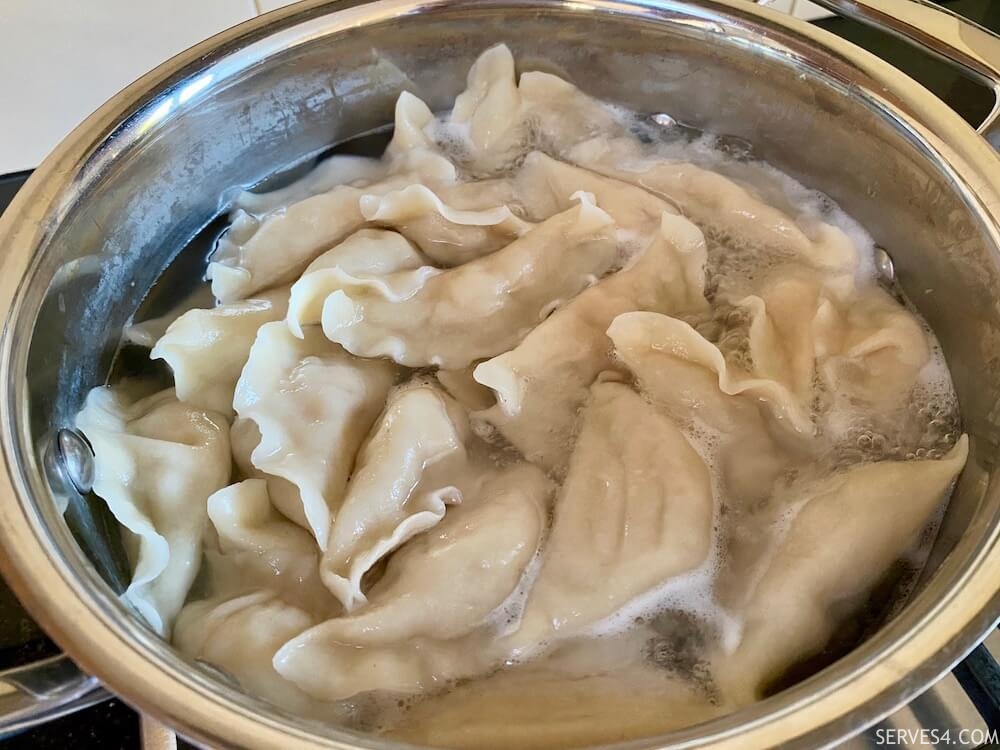
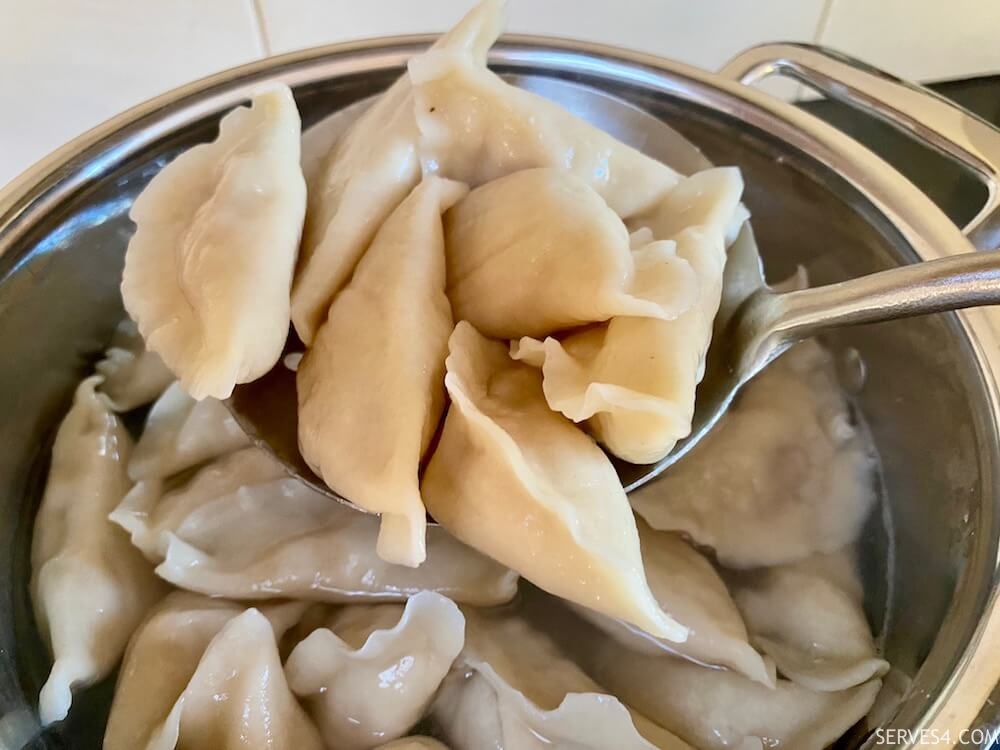
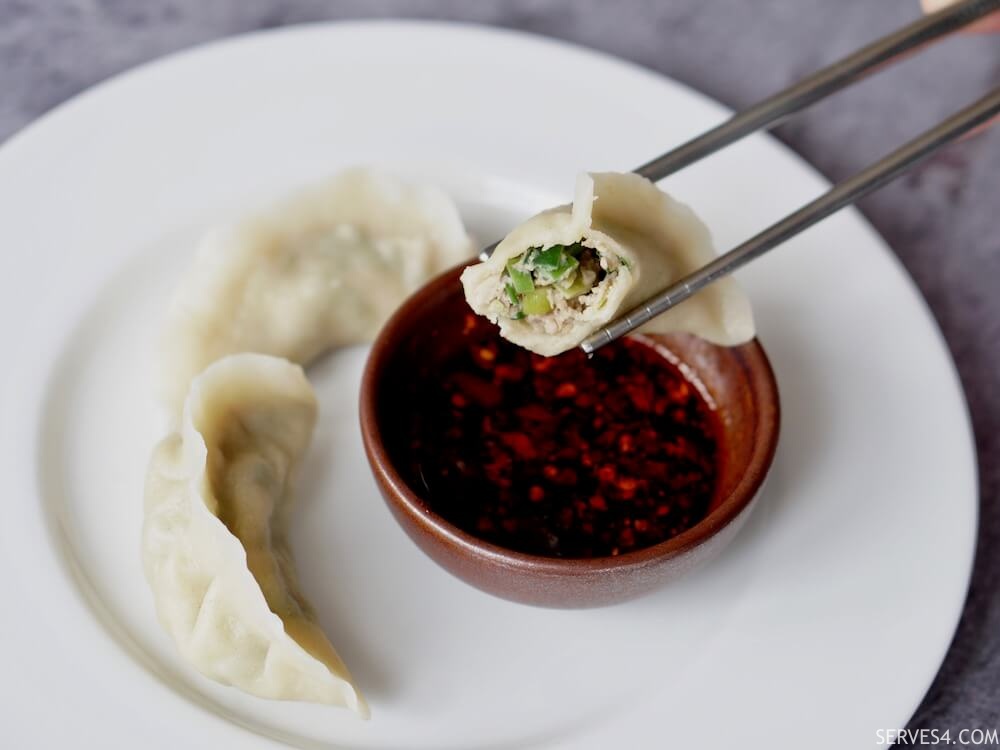
It's no problem at all if you're not cooking your dumplings fresh - they freeze incredibly well and taste nearly as good when cooked from frozen. To store, place the wrapped dumplings on a parchment-lined baking sheet, pop them in the freezer for 10-15 minutes until frozen, then transfer to an airtight food storage bag. They should keep for about 4-6 weeks. To cook dumplings from frozen, add them straight from the freezer to a pot of boiling water. Cook for 6 minutes or so, or until the dumplings float.
Despite the lengthy tutorial, there's really not much involved when it comes to making Chinese dumplings. So why not dive in and try your hand at it?
Take a look at my other, related, recipes below:
- Dumpling Wrappers Recipe (Jiao Zi Pi | 饺子皮)
- Dumpling Filling Recipe
- Pork Dumpling Filling with Garlic Chives
- Spicy Chinese Dipping Sauce
If you're making dumplings for Chinese New Year, take a look at my recipes for other foods to enjoy:
- Baked Sticky Rice Cake with Red Bean Paste (红豆 烤年糕)
- Sweet Red Bean Paste (红豆沙) (you can also make Instant Pot Red Bean Paste)
- Chinese Rice Cake Stir Fry (炒年糕)
- Lion's Head Meatballs (狮子头)
- Glutinous Rice Balls (汤圆) with Black Sesame
Here's how to make Chinese dumplings and what you'll need:
(Click here to jump straight to the recipe)
2 batches of homemade dumpling wrappers (or about 60, if you are using ready made ones)
1 batch (~450-500g) of dumpling filling recipe
A small bowl of water, if using shop bought wrappers
And here's what to do:
- Place roughly a teaspoonful of filling in the centre of the dumpling wrapper.
- Bring together opposite sides of the wrapper, and pinch in the middle to seal (using water, as necessary).
- For the simpler crescent moon shape, create a pleat on one side of the centre seal, going towards the seal, and pinch closed.
- Repeat this on the other side of the centre seal, so that you have two pleats going in opposite directions, both towards the centre.
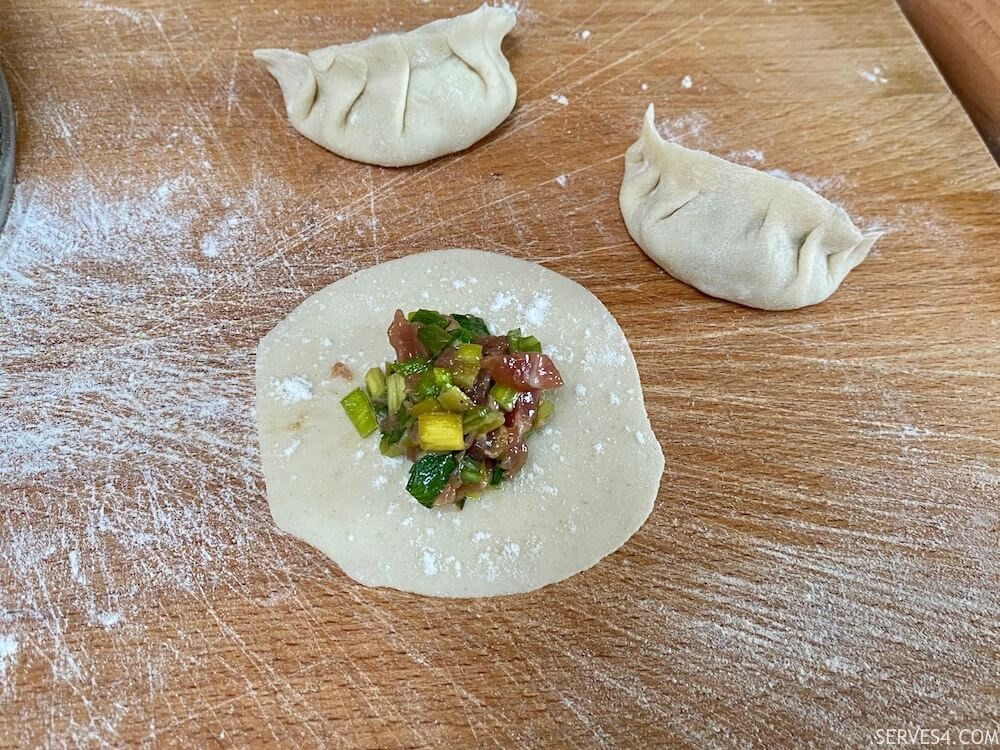
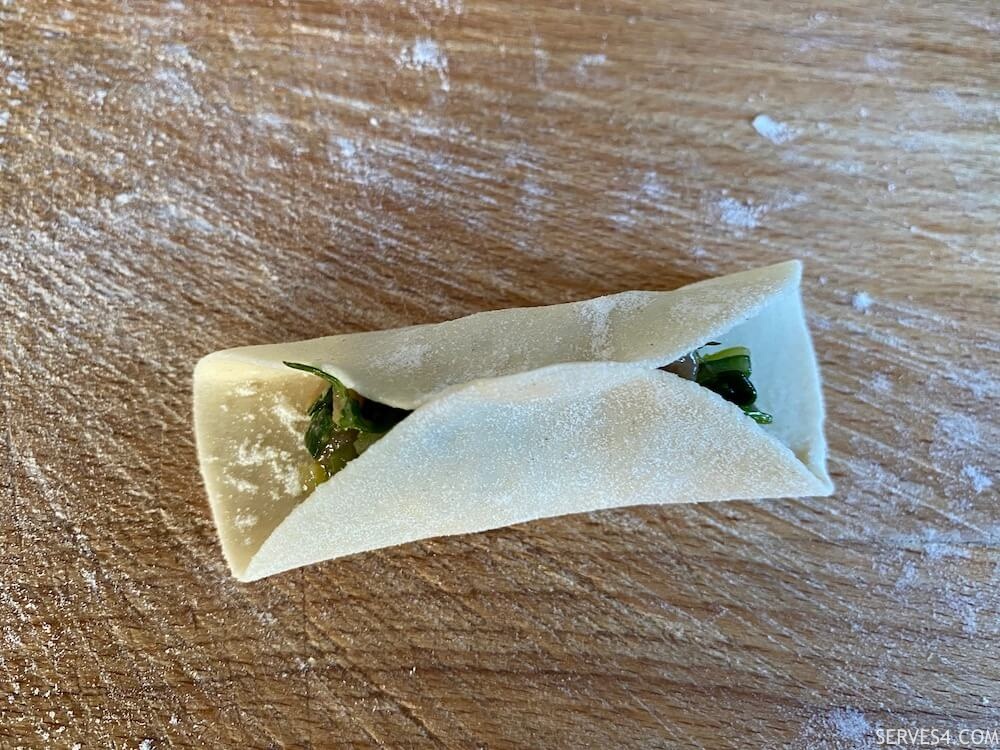
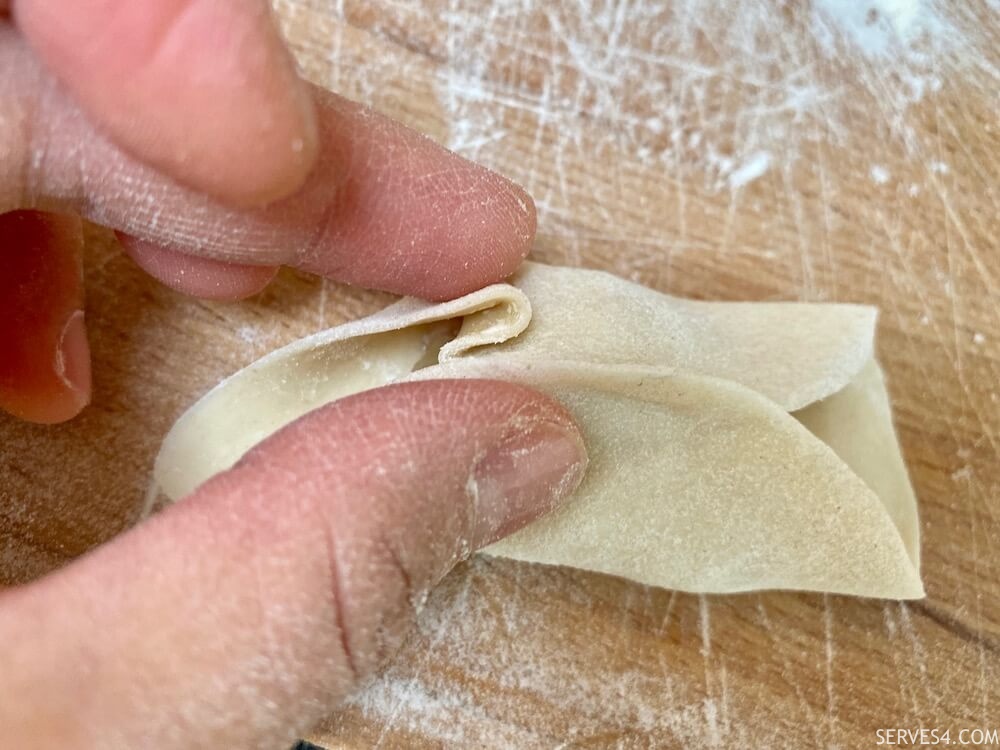
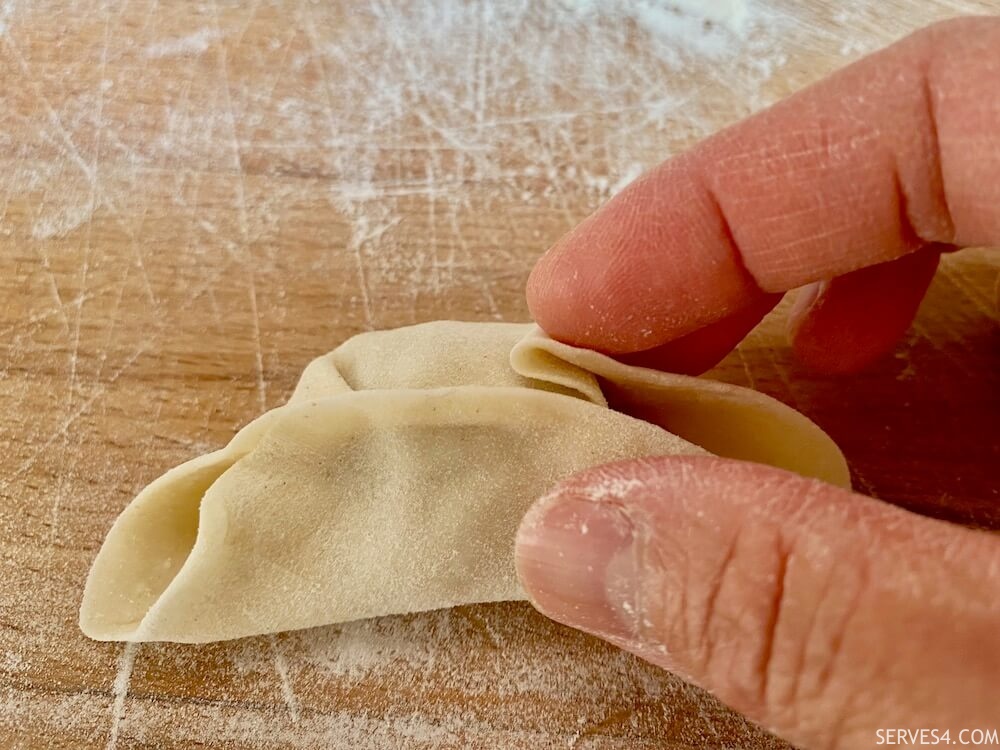
- Pinch the edges of both sides completely sealed, forming a crescent moon shape, and redistribute the filling into any empty pockets (this is a bit like squeezing toothpaste along a nearly empty tube!).
- Pinch along the entire edge of the dumpling to ensure a complete seal, and set it aside to be cooked or stored.
- To wrap dumplings in the more stylish and typical crescent moon shape, follow the instructions above, but make three pleats on either side of the centre seal, going towards the seal.
- Repeat on the other side, and you should have six pleats in total, three on each side, going in opposite directions, towards the centre.
- Continue in this way until you've used all your dumpling wrappers and filling.
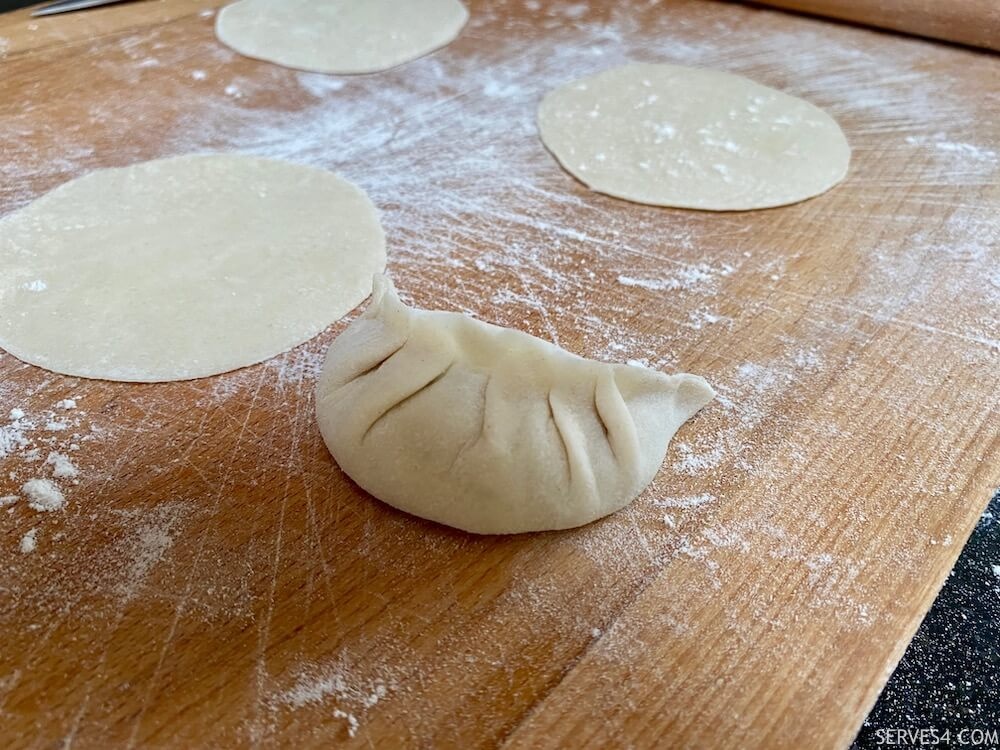
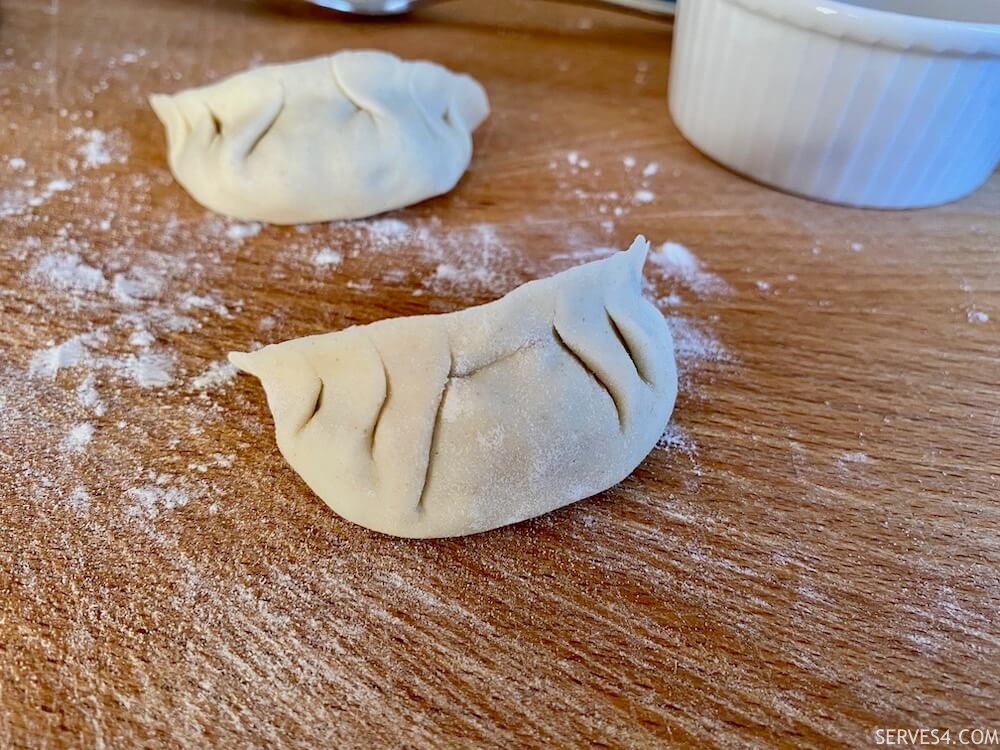
How to Make Chinese Dumplings
(Shui Jiao | 水饺)
By Wendy | Serves 4
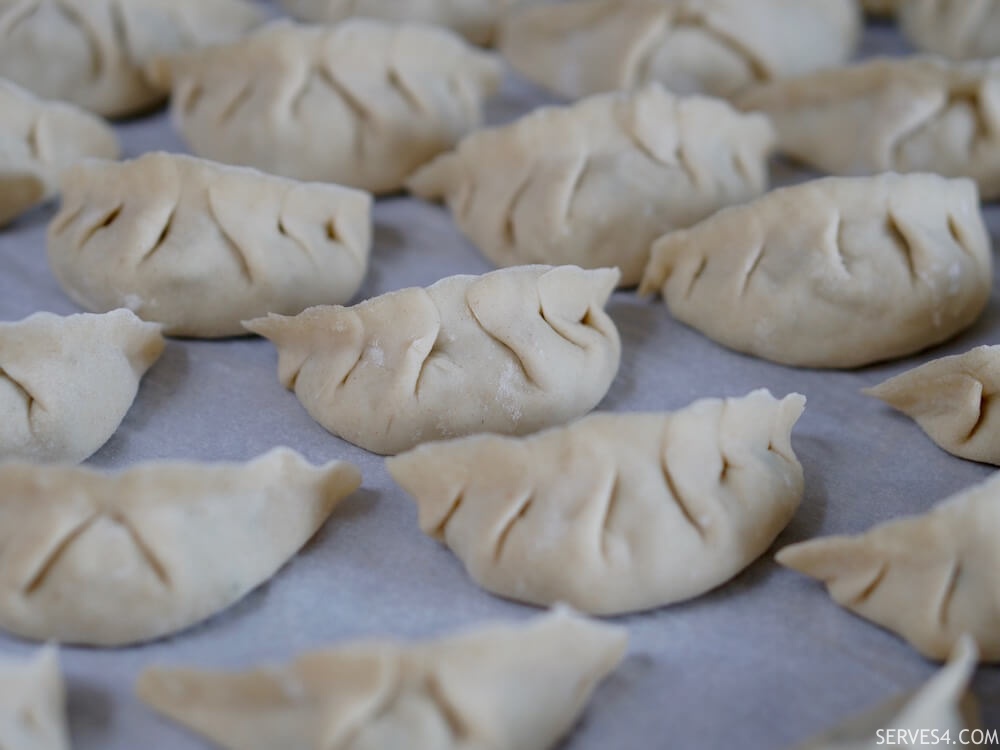
Learn how to make Chinese dumplings (水饺), whether for Chinese New Year, a snack or whenever the craving hits.
Prep Time: 5 minutes to set up your work area and gather your ingredients
Wrap time: 20-30 minutes (for about 60 dumplings)
Yield: 60 dumplings
Course: Main, Snack
Cuisine: Chinese
Tags: Dumplings, Chinese New Year
Ingredients
2 batches of homemade dumpling wrappers (or about 60, if you are using ready made ones)1 batch (~450-500g) of dumpling filling recipe
A small bowl of water, if using shop bought wrappers
Method
- Place roughly a teaspoonful of filling in the centre of the dumpling wrapper.
- Bring together opposite sides of the wrapper, and pinch in the middle to seal (using water, as necessary).
- For the simpler crescent moon shape, create a pleat on one side of the centre seal, going towards the seal, and pinch closed.
- Repeat this on the other side of the centre seal, so that you have two pleats going in opposite directions, both towards the centre.
- Pinch the edges of both sides completely sealed, forming a crescent moon shape, and redistribute the filling into any empty pockets (this is a bit like squeezing toothpaste along a nearly empty tube!).
- Pinch along the entire edge of the dumpling to ensure a complete seal, and set it aside to be cooked or stored.
- To wrap dumplings in the more stylish and typical crescent moon shape, follow the instructions above, but make three pleats on either side of the centre seal, going towards the seal.
- Repeat on the other side, and you should have six pleats in total, three on each side, going in opposite directions, towards the centre.
- Continue in this way until you've used all your dumpling wrappers and filling.
What's on your mind?
Let us know any thoughts, comments or questions by getting in touch here.
Back to the Top!

